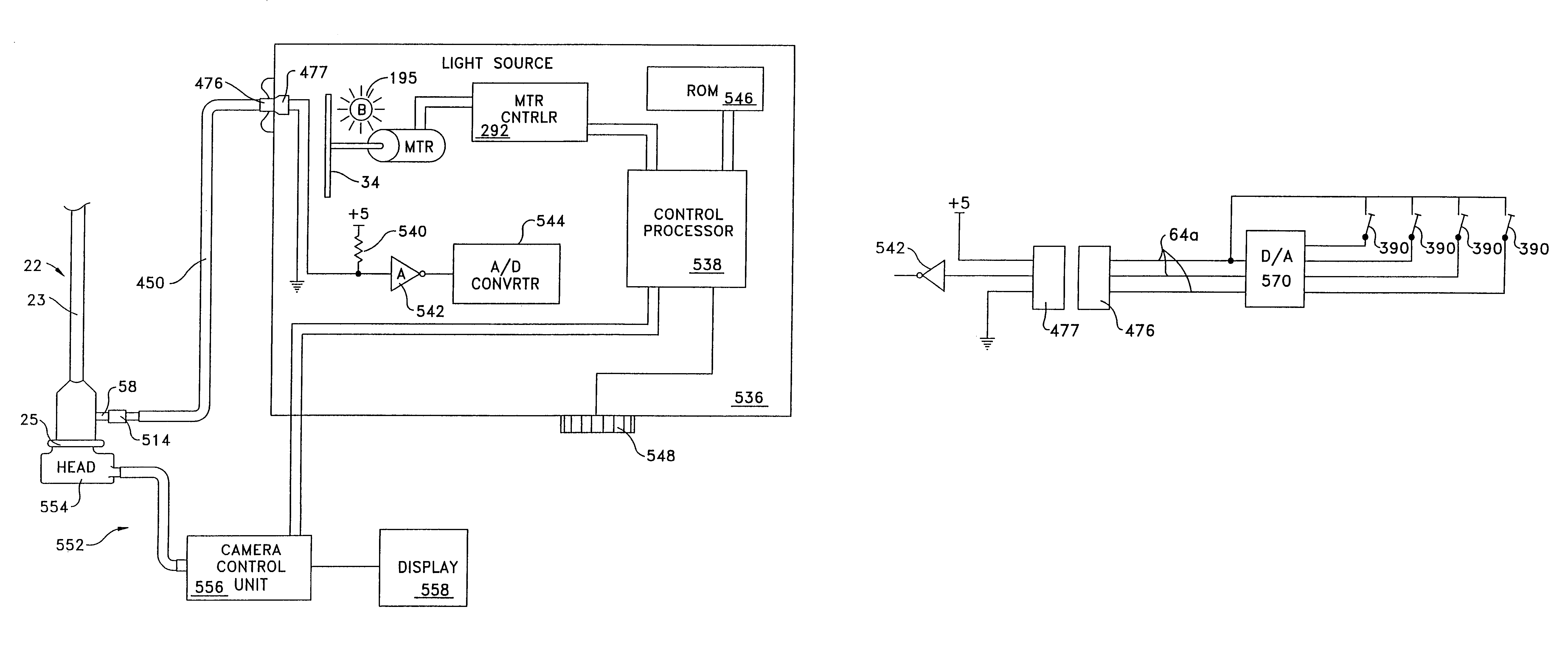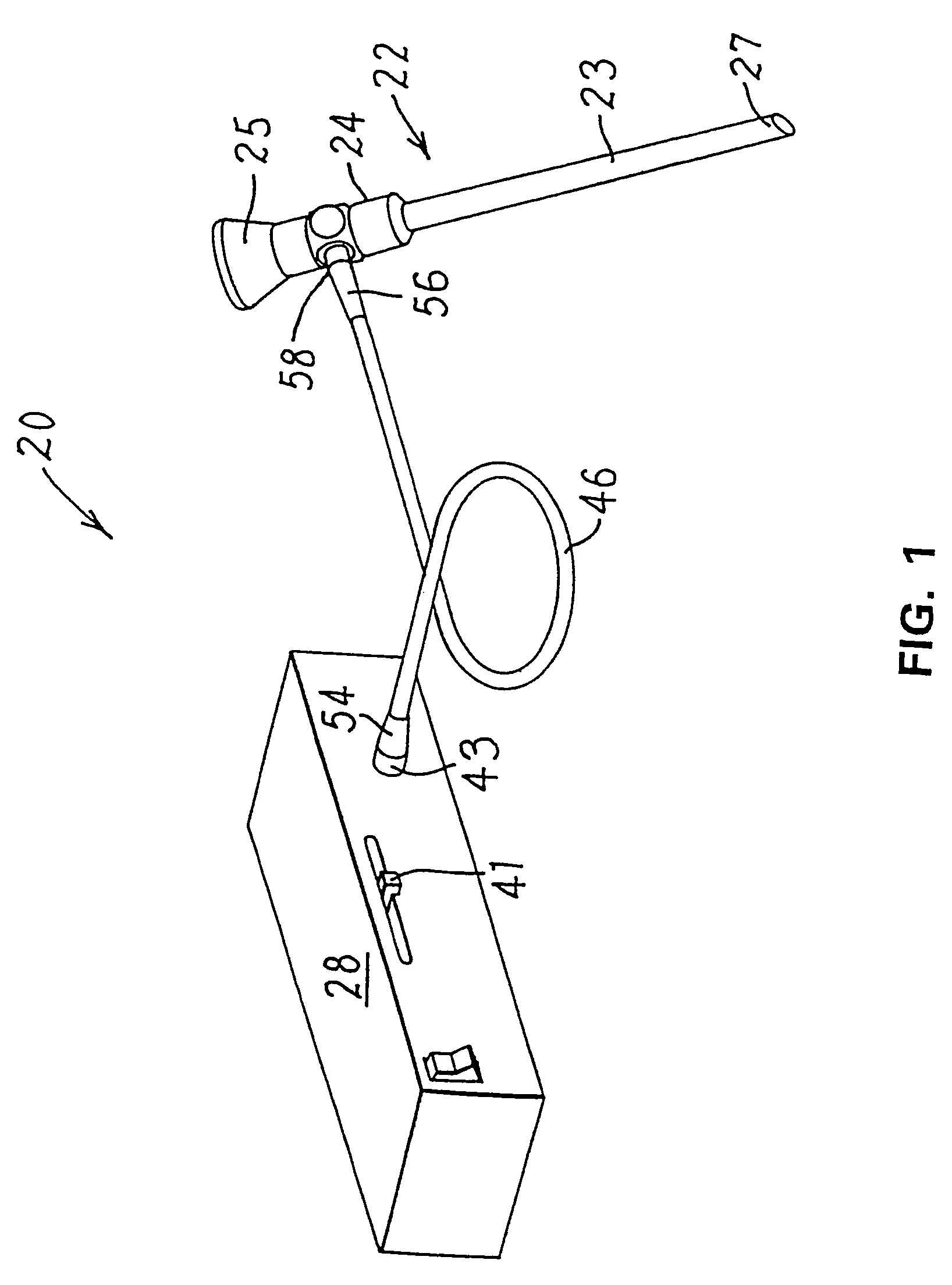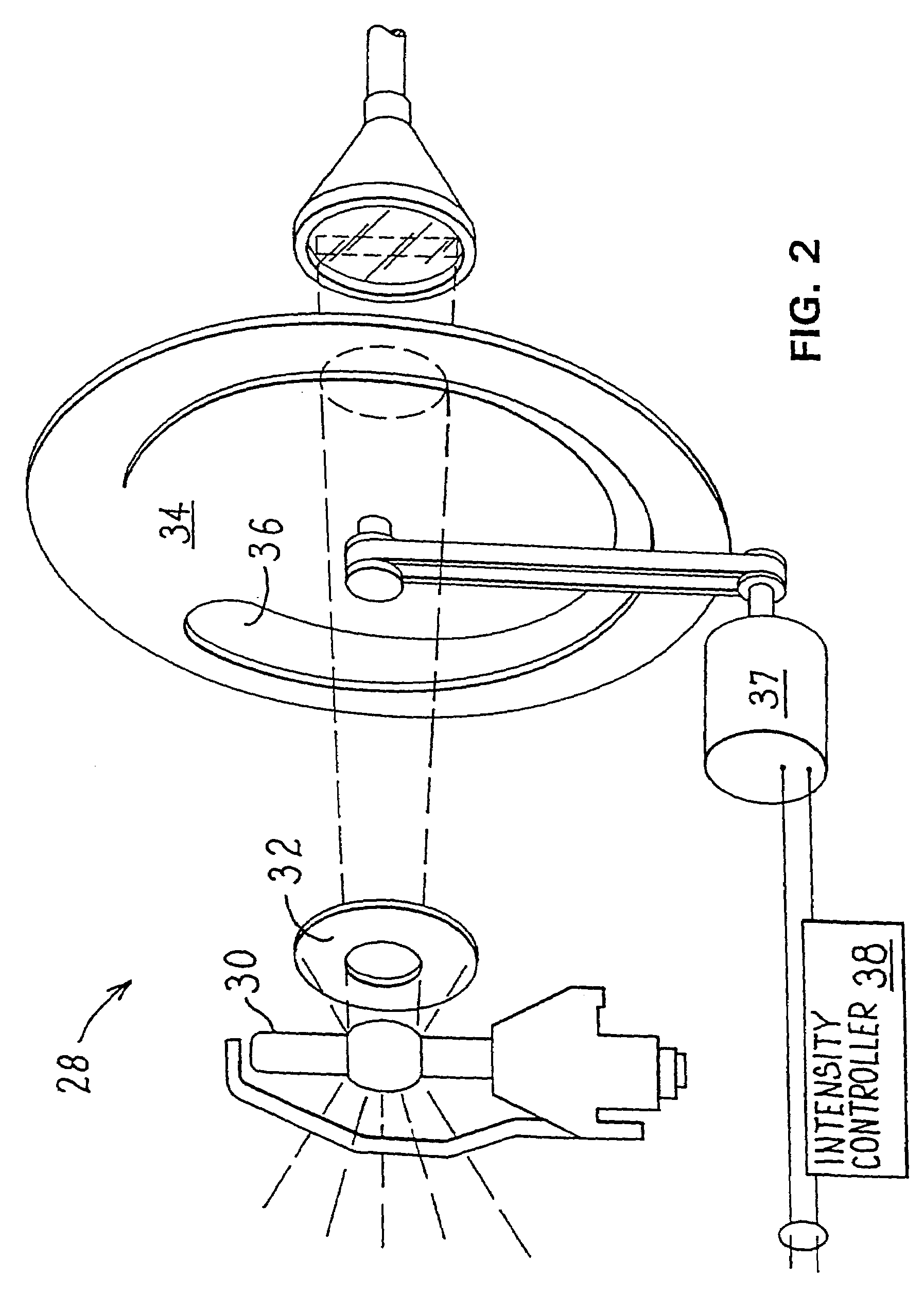Endoscope assembly useful with a scope-sensing light cable
a technology of endoscope and light cable, which is applied in the field of endoscopes, can solve the problems of large amount of light energy required by the light source of an endoscopic, drapes that may either burn or ignite, and energy may singe the drape, so as to reduce the extent of light emitted
- Summary
- Abstract
- Description
- Claims
- Application Information
AI Technical Summary
Benefits of technology
Problems solved by technology
Method used
Image
Examples
Embodiment Construction
[0055]FIG. 1 illustrates the basic features of the endoscopic system 20 of this invention. The endoscopic system 20 includes an endoscope 22. The endoscope has an elongated hollow shaft 23 with a distal end 27 that is positioned inside the body of the patient. A window, not illustrated covers the distal end of the shaft 23. The shaft 23 also has a proximal end 24 that remains outside of the patient. An eyepiece 25 is fitted over the proximal end 24 to provide a viewing port through which the surgeon views the surgical field. Optical focusing elements, not illustrated, in the shaft 23 serve to enhance the visible field of view. The eyepieces 25 of many endoscopes are designed to hold a television camera. These cameras provide surgical personnel with a view of the surgical site on complementary monitors to which they are connected.
[0056]Endoscopic system 20 includes a light source 28 for illuminating the surgical site. As seen by reference to FIG. 2, light source 28 includes a bulb 30...
PUM
 Login to View More
Login to View More Abstract
Description
Claims
Application Information
 Login to View More
Login to View More - R&D
- Intellectual Property
- Life Sciences
- Materials
- Tech Scout
- Unparalleled Data Quality
- Higher Quality Content
- 60% Fewer Hallucinations
Browse by: Latest US Patents, China's latest patents, Technical Efficacy Thesaurus, Application Domain, Technology Topic, Popular Technical Reports.
© 2025 PatSnap. All rights reserved.Legal|Privacy policy|Modern Slavery Act Transparency Statement|Sitemap|About US| Contact US: help@patsnap.com



